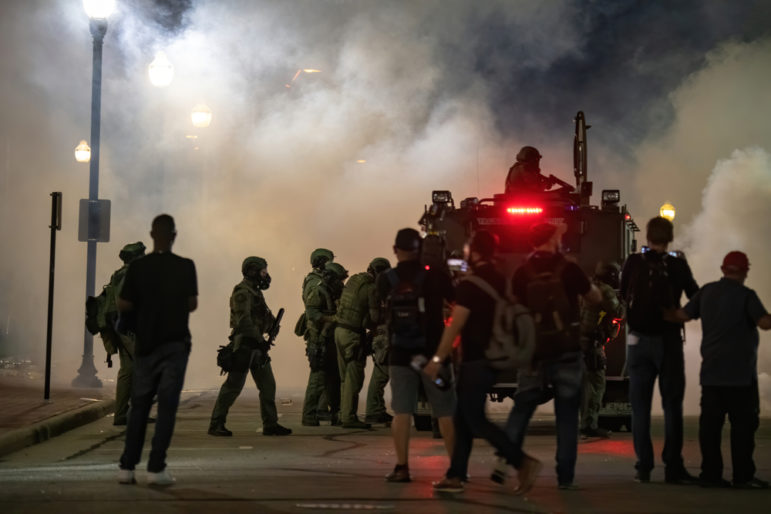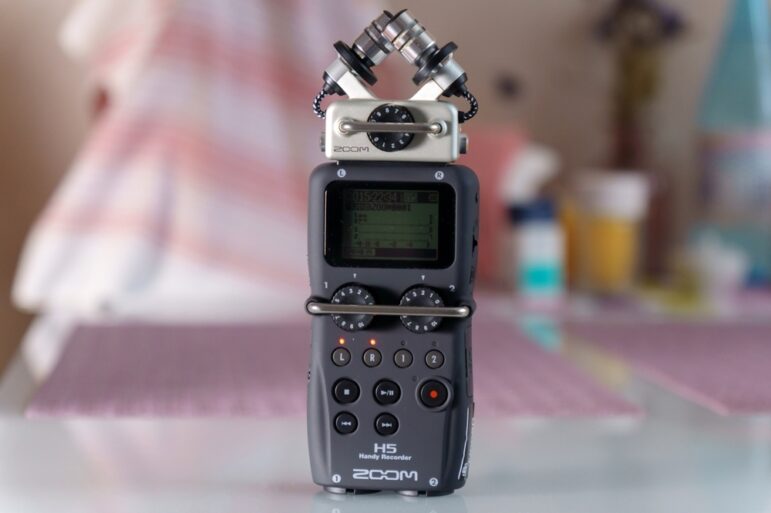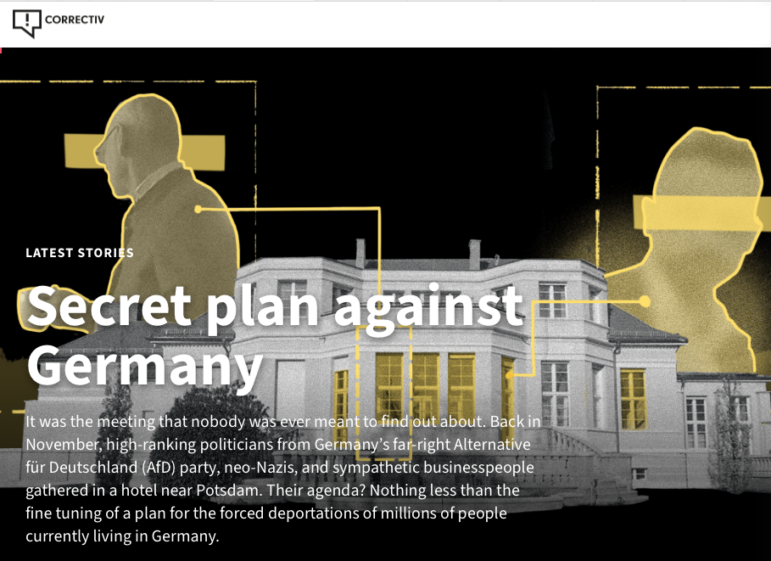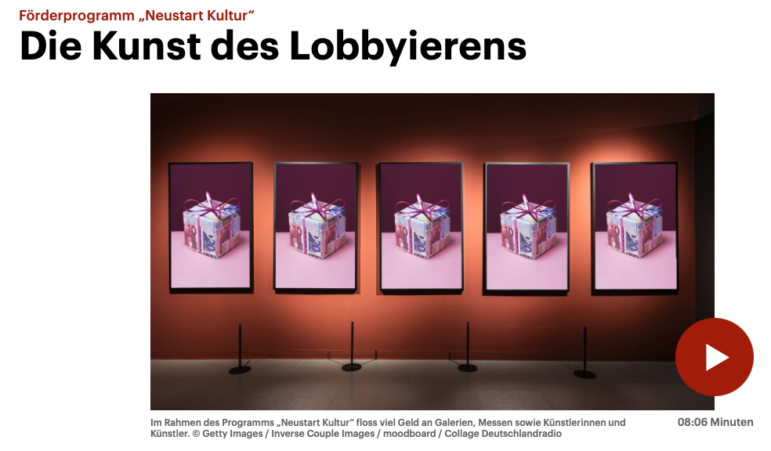

Two journalists combined audio and data reporting tactics to investigate Germany's massive grant program funding arts and culture. Image: Screenshot, Deutschlandfunk Kultur
Data-Driven Reporting for Investigating the Cultural Sector
While it’s become commonplace to use data and AI tools for investigations into financial or government wrongdoing or the environment, it’s perhaps less common for investigating the arts and culture sector.
That was the assessment of Max Kuball, a freelance journalist, and Lars Hendrik Beger, an editor at the public radio broadcaster Deutschlandfunk, who started developing the Deutschlandfunk Kultur program in 2022 to investigate cultural affairs with what they call a “data mindset.”
At the 2025 Netzwerk Recherche conference in Hamburg, they shared three case studies in which they employed creative methods of digging into the beat — such as making their own data sets, pinpointing effective chatbot prompts, using AI to make data more accessible for the visually impaired, and analyzing troves of audio or PDF files.
‘Projekt Kulturmilliarde’: Tracing the COVID Billion
In the summer of 2020, the German federal government unveiled a €1 billion (US$1.1 billion) program for supporting and preserving cultural institutions and infrastructure endangered by the COVID-19 pandemic. The Neustart Kultur program came to be known colloquially as the “Kulturmillarde” or the “cultural billion,” and was the largest cultural funding program in Germany’s history.
The investigation — which along with Max Kuball also included Fabian Dietrich and data journalist Peter Sim —was premised on two simple questions: Exactly where did this money end up? And how was it used? They discovered that there wasn’t a simple answer.
To do this, they took a data journalism approach — collecting figures, dates, names, and amounts and making the information a searchable data set. The investigation was released in three parts over 18 months, in text, but also as a radio feature.
- They reported in 2022 that more than €100 million (US$110 million) of the cultural billion funds went to the visual arts and that the money was used to support galleries and art fairs without a clear assessment of whether it was needed, thanks to alleged lobbying by gallery owners who influenced the distribution of funds.
- In 2023, they reported that some €94 million (US$103 million) flowed into the book industry during the pandemic and that some of this money was used for far-right book projects.
- In 2024, they published an article evaluating various facets of the Neustart Kultur program, such as the process for distributing the funds, how it was managed, and how transparent funding allocation was. Findings include that most of the money was spent in Berlin.
Beger and Kuball initially asked for detailed funding data from Germany’s Federal Government Commissioner for Culture and the Media (BKM) — but the data they needed wasn’t available. Instead, they developed a questionnaire asking about programs, applications, and funding amounts, recipients, and project descriptions, which they sent to the 40 associations and foundations tasked with distributing the government’s funds. They also interviewed artists, gallery owners, and jury members.

Deutschlandfunk Kultur bar chart on “approved applications by art sector” receiving Neustart Kultur funds from the German government. Image: Screenshot, Deutschlandfunk Kultur
They did obtain some additional information from FOIA requests to BKM, such as balance sheets, communication, protocols, emails, and “speaking notes,” but some documents took 18 months to arrive.
They enlisted Austrian data journalist Peter Sim who worked with them on a freelance basis to help handle the data trove.
Because “data is hard to get across on the radio,” they also needed a print story, Kuball explained. They used AI to produce “alt-text” for vision-impaired individuals. Visualizations such as bar and pie charts are only accessible to the visually impaired if a screen reader “reads” them aloud, they noted: “We formulated the corresponding alt texts with the help of ChatGPT.”
How the Far Right Erodes Remembrance Culture
The way German society collectively deals with its past — and particularly the National Socialist period — has become a battleground for the far right in advancing their agenda. By using the term “New Right,” the proponents of this movement seek to distance themselves from Nazism. Some far right politicians have used the debate over remembrance culture to challenge the historical consensus of Nazism, downplaying the crimes of the past and calling for a “180-degree change in remembrance culture,” which they argue is too shame or guilt-focused and hampers Germany’s “development.” Podcasts and memes in the far-right online world then world follow suit — including on TikTok — while in the real world, there has also been an increase in attacks and vandalism on memorial sites that commemorate the victims of the Nazi era.
In a 2024 investigation, Beger, Kuball, and colleagues Fabian Dietrich and Peter Sim delved into how the “New Right” attacks remembrance culture. They wanted their investigation not only to rely on text and statements, or what they termed “qualitative” information; they wanted to use data-driven methods, or “quantitative” ones. As they felt the best objective measure of attacks would be a record of incidents at memorial site museums, such as those located at former concentration camps, they sent a bespoke questionnaire to such sites in Germany, including Bergen–Belsen, Dachau, and Buchenwald, asking for data and information about attacks on the culture of remembrance.
Initially, they didn’t have much luck; they found that memorial museums didn’t want to make themselves vulnerable to further attacks, that the figures didn’t exist, or that the availability of data was inconsistent across memorial sites.
Then they had what Kuball described as “a great stroke of luck”: a member of parliament asked a question about the number of attacks on memorial sites, forcing a federal government response. They obtained further details on politically motivated attacks from Germany’s federal police. According to the compiled data, 59% of politically motivated attacks on memorial sites — more than 1,000 of 1,741 recorded since 2019 — were associated with right-wing ideology. (The remaining proportions included 23% attacks associated with left-wing ideology, with the rest made up of attacks motivated by a foreign or religious ideology.)
They also used AI to analyze the far-right podcast, Kanal Schnellroda. When the pair started their investigation, there were 222 episodes, equivalent to about 140 hours of audio. To investigate how the culture of remembrance is discussed on the podcast channel, they had to parse 140 hours of audio material — something that requires a lot of time and staff, neither of which they had. Available transcription tools struggled to record accurately when there were multiple speakers. So they turned to ChatGPT.
To use ChatGPT effectively, they had to get the correct prompt through trial and error; they recommend taking your time to keep asking more and more pointed prompts to get a good result, not to start over, and to ask ChatGPT for progress reports. They created a prompt asking it to transcribe all episodes from the RSS feed and searched it for a list of 80 keywords — encompassing historical terms, such as “Hitler” and “Holocaust” as well as terms used by far-right politicians in public statements (such as “guilt cult“) attempting to revise remembrance culture.
They found at least 115 instances where these terms appeared, and that at least one of the designated keywords was mentioned in one quarter of all episodes. That data enabled them to show that historical revisionism regarding the Nazi period is a central theme of the podcast, which also parroted terms used by AfD politicians; that the crimes of National Socialism are regularly downplayed or “relativized” on the podcast; and that the content is often targeted at younger audiences, among other findings.
Kuball explained that prominent far-right figure and Schnellroda podcaster Götz Kubitschek — in response to a lengthy list of questions and a request for a statement they sent him in advance of publication — simply sent them three links to articles on the right-wing magazine Sezession.de, with no further comment.
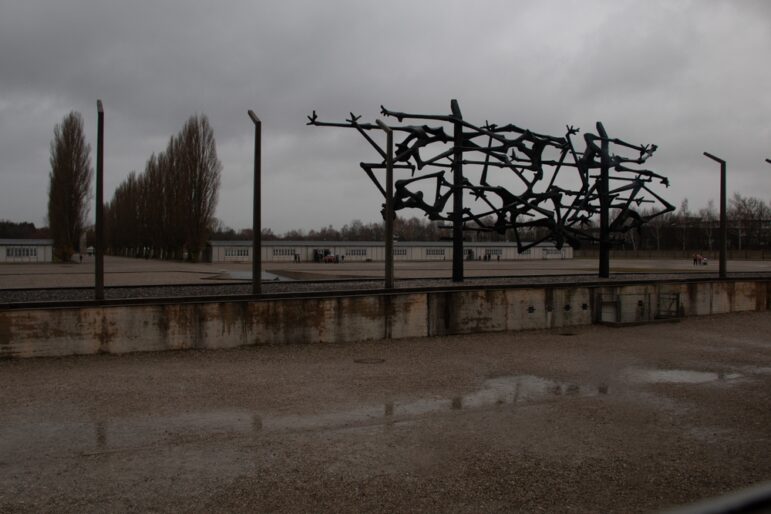
Sculptural memorial at the former Nazi concentration camp in Dachau, Germany. Official statistics found that nearly six in 10 attacks on German holocaust memorial sites since 2019 were spurred by far right ideology. Image: Shutterstock
European Capital of Culture and Lobbying
The European Capital of Culture is an EU program that designates a European city each year to hold the title — which comes with prestige and funding — and host various cultural events. In April 2025, Deutschlandfunk Kultur published their investigation detailing how the bidding process works, who makes the decisions, and where there might be potential abuse of power in the sector.
Their investigation — conducted by Pia Behme, Peter Sim, and Kuball — was sparked by an article published by the German newspaper Süddeutsche Zeitung containing an accusation about “dirty play” and alleged jury tampering in the decision-making process involving the Chemnitz and Nüremberg bids.
Their goal was to identify the target groups of European Capital of Culture managers, jury members, and advisors, and examine overlaps. They started with FOIA requests, but the relevant EU press office dragged its heels for months on releasing the requested information. They also had no FOIA luck on the list of European Capital of Culture managers and leaders; instead, they found 188 “bid books” — PDFs of city application books — each about 30 to 100 pages, and difficult to search manually.
They wanted to find out who was involved in the bid application process in each city to see if there were any conflicts of interest. They fed the PDFs to AI to analyze them to find recurring names or patterns. They created a list of role descriptions (such as “advisor, “advisory,” or “manager”) as well as a list of names they already knew were involved in these processes from some simple searches they had done online. But they had no luck; the data was too extensive and the AI was overwhelmed and brought back hallucinations.
Their solution was to have Peter Sim build a bespoke tool for ChatGPT to run an automated PDF analysis based on specified search terms inside an Excel file. This enabled them to find individuals who appeared to advise cities again and again on how to win a bid.
“[Researchers] were able to demonstrate in detail that some of the current 27 member states are significantly overrepresented in these decision-making positions,” their investigation noted. “The results show: A small circle of experts wields great influence; sometimes they work in the management of a Capital of Culture or candidate city, sometimes in consulting, sometimes as members of the selection jury.”
 Alexa van Sickle, a GIJN associate editor, is a journalist with experience across digital and print journalism, publishing, and international think tanks and nonprofits. Before joining GIJN, she was senior editor and podcast producer for the award-winning foreign correspondence and travel magazine, Roads & Kingdoms, and a contributor for its sister site, Explore Parts Unknown — the companion website for Anthony Bourdain’s “Parts Unknown” TV show.
Alexa van Sickle, a GIJN associate editor, is a journalist with experience across digital and print journalism, publishing, and international think tanks and nonprofits. Before joining GIJN, she was senior editor and podcast producer for the award-winning foreign correspondence and travel magazine, Roads & Kingdoms, and a contributor for its sister site, Explore Parts Unknown — the companion website for Anthony Bourdain’s “Parts Unknown” TV show.


